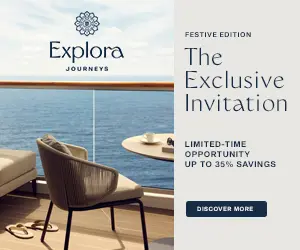T&T Rolls Out Gamification for Biz Travel
by Cheryl RosenWhen Travel and Transport decided last year to develop a gamification program for corporate customers, it was making a conscious effort to focus on the carrot rather than the stick approach to travel management.
Whether the carrot approach is the best way to build travel policy compliance will soon be put to the test, as the 67-year old Omaha-based agency is about to launch a technology-based incentive program that rewards and recognizes travelers for good behavior.
The global travel management firm is starting with just “a handful of customers” – four or five clients will introduce gamification programs in the next few weeks, said Travel and Transport vice president of account management Nancy Rissky.
Rewards vs. recognition
Half of those customers will offer their travelers points that can be collected and redeemed for merchandise and travel rewards. The other half will give recognition only, naming the most-compliant travelers on their executive dashboards and in internal publications.
The redeemable-points approach is just a new take on an incentive program, something many large agencies like Travel and Transport and their corporate customers already understand and employ – though usually to motivate sales not travel policy compliance.
The recognition approach is perhaps a better fit for companies such as government contractors and insurance businesses that shy away from – and often are prohibited from – giving outright gifts.
Engage through play
Recognition programs are also a particularly good fit for legal and accounting firms, where many travelers are partners, which makes travel managers hesitate to use the “mandate” word to describe travel policy.
To boost compliance with a travel policy that’s more a suggestion than an order, engaging people in a playful manner, while giving public recognition to travelers who do the most to hold down the firm’s expenses, can do wonders.
And, of course, when employee review time rolls around, being a winner in a travel gamification program looks awfully good on your record.
Gamification takes hold
Gamification is not a new concept, but it is gaining a foothold in Corporate America and among travel industry companies whose clients include early adapters.
In October, for example, mobile meetings technology firm QuickMobile added a standard gamification feature to the event apps it has built for its mostly Fortune 100 customers; the app is aimed at meetings and incentive programs.
The real benefit of gamification is not just motivating an audience through fun challenges, but the ongoing opportunity to communicate over long periods and in real time, said QuickMobile’s Trevor Roald.
In a sales incentive program, for example, a live board can offer up-to-the minute feedback that spurs competition by showing the leading salesperson when a colleague pulls ahead of him.
Science of motivation
It’s not the concept of incentives that is new, Roald said. What’s new is the science of using motivators to drive employees toward given objectives by creating relevance and allowing them to connect on their own terms.
Nor is gamification merely an attempt to motivate younger employees.
“The core tenets are not about reaching younger workers,” Roald said. “They are more about dialing into those core human desires of people of all ages and creating a program that drives them to achieve those desires through a sense of wonder and fun, rather than feeling like they are being forced.”
Getting results
One travel buyer who has successfully implemented gamification is Karoline Mayr, travel manager at the software firm Deltek. Mayr was recently named Travel Manager of the Year by Business Travel News in part for her travel gamification program.
Mayr has developed several gaming contests, including one that entered travelers into a drawing when they booked with Hertz. The winner got a weekend car rental – and Deltek got a 10-percentage-point jump in Hertz market share.
A second gaming contest was developed in cooperation with United Airlines to encourage the early adoption of Kona, Deltek’s internal social network, before the company offered it to customers.
Travelers were asked to take pictures that included both the United Airlines and the Deltek logos and post them in Kona. The traveler who posted the most creative picture won United tickets.
Mayr said the contest helped Deltek exceed some of its market-share goals set with United.
She advised travel managers considering a gamification program not to stress over the details.
Just do something fun and easy and see how it goes.



















